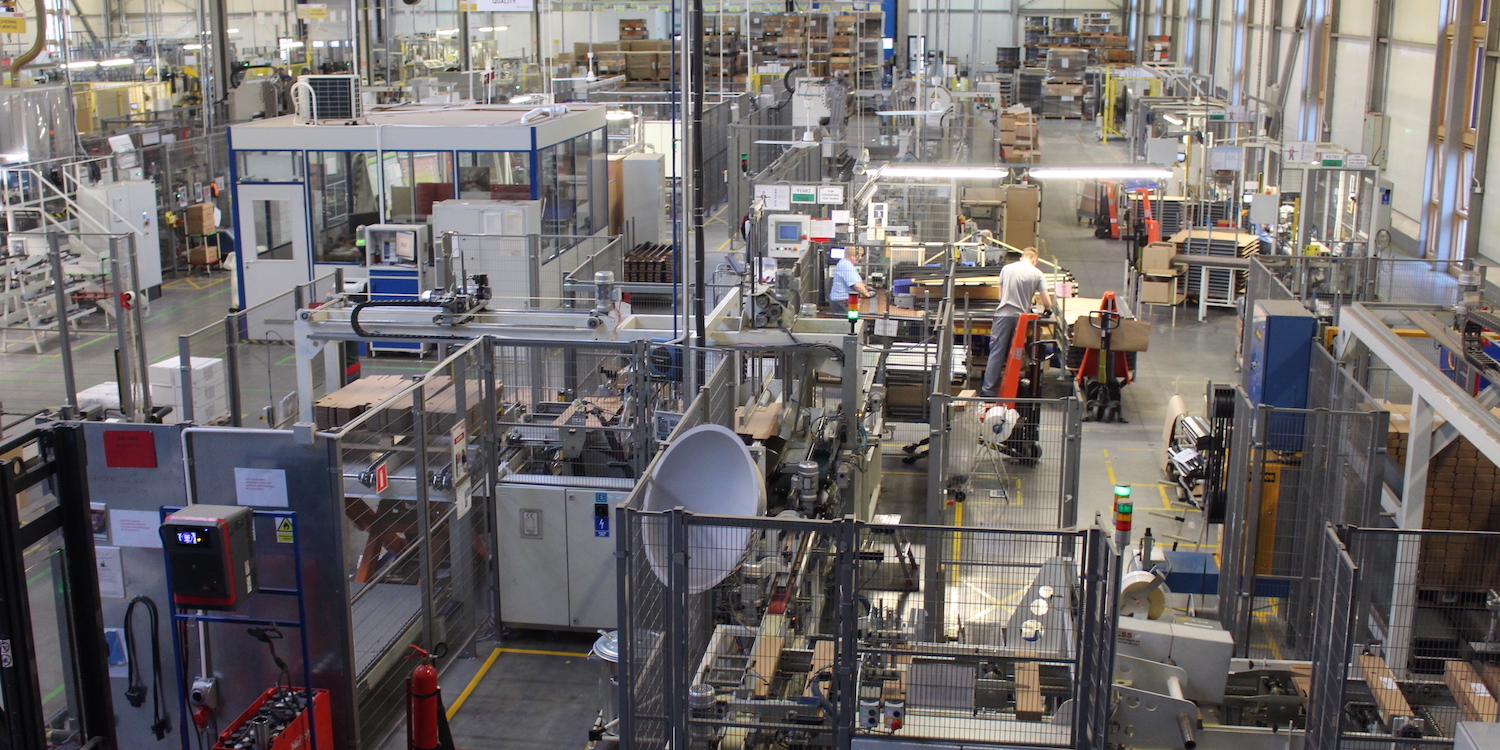
Blue-sky thinking
CASE STUDY – Successfully engaging people and building a solid daily management system is allowing a Velux factory in Poland to fulfill its strategic goals.
Words: Kristian Zurek, Paweł Krawiecki and Rafał Mazur
Velux, a Danish company known for its skylights and roof windows, first came to Poland in the early 1990s. Initially, they established a Sales office in Warsaw but over the years they opened two factories in our country (nationwide, Velux employs around 2,000 people).
Our factory, near Wroclaw, opened in 2003 and our lean transformation began three years later. Over time, the Velux Manufacturing Model gave us improved performance and helped us to boost our productivity (for example, when the introduction of polyurethane windows in our production schedule led to a considerable increase in volumes in 2006). For over a decade, our lean efforts focused on our production area: at one point, over three months, our employees completely changed the layout of the production floor to introduce one-piece flow. The change had been planned over the course of a five-day “marathon kaizen” (we also have one-day “blitz kaizen” events for smaller problems).
In 2016, top management decided to bring lean thinking to the whole supply chain – from design to final product. That’s when we truly adopted a value stream view, a change that was welcomed by our production team. Until then, our lean journey had mainly focused on the tools, which we used to create stability in our processes.
More recently, we decided we wanted to get a better understanding of the impact of lean on our business. To do that, we reached out to the Lean Enterprise Institute Polska and asked them to share their views on our transformation. They gave us interesting feedback and recommended we consider introducing hoshin kanri (policy deployment) at the Velux factory in Namyslow. They helped us to realize that we needed more structure and a way to align our processes and improvement work to the business strategy.
When we adopted Vision Blue Sky as our long-term strategy, we divided the organization in three levels – strategic, tactic, and operational – and assigned role and responsibilities to each of them. The system is built on the five main elements of what makes our plant work: safety/environment, quality, delivery, cost and people.
First, we created goals for our strategic level based on customer needs and assigned system KPIs to them that our employees could understand and that could influence our performance. We then began working to cascade these goals to the operational level.
We have two hoshin at strategic level – one monthly and one yearly – whereas at tactical level, we have a monthly hoshin supported by daily meetings. Before we implemented policy deployment, we used to drown in data and KPIs and people were getting really confused. Besides, we only ended up using a few of them. Hoshin simplified our daily meetings system and limited the number of KPIs we track (from 117 to 18 in one instance). It forced us to redefine our goals and, as a result, gave everyone a clear understanding of their responsibilities. In our new structure, goals are cascaded down from top to bottom, and problems are escalated from the bottom to the top.
There is a lot of work ahead of us, but our culture has certainly begun to shift. Our people are getting more and more involved, and they now know the business inside out.
CHANGE LEADERSHIP TO CHANGE THE CULTURE
As senior leaders, we strive to be a model for our people: we want them to know this new way of working is important to us, and that’s why we often show up at the daily meetings and at the gemba. The positive feedback we receive proves that visible leadership, though a bit challenging at first, sends a strong message to employees. These days, all senior leaders make an effort to try and spend as much time as they can on the gemba.
Once a month, we even hold a meeting with the general manager and 10-12 employees. The idea is to discuss different topics and provide front-line people with an opportunity to ask top managers questions. The meeting is open to everybody.
Communication is critical for us. In fact, we try to create as many opportunities for interaction between different levels of the organization as possible. We run dozens of events every year, from photo competitions to tournaments (different teams earn points based on number of improvements, KPI performance, etc, and can win a coveted trophy) to annual picnics. Our rewards system is not money-based; instead, employees whose contribution has benefited the business typically receive a diploma and meet with management. Recognition is fundamental!
Even our 5S assessments (which we have nicknamed “gemba patrol”, taking place once a month and always with different people) are an occasion for senior managers and front-line staff from different areas to come together at the gemba and look for improvement opportunities together. It’s proved to be a very effective approach to build relationships and trust across the business. Questionnaires, like the Global Employee Survey, also contribute to giving our people a voice: in fact, many of the initiatives we have implemented have stemmed from feedback they have given us. Velux employees know they can shape the environment they work in: how else would we have implemented more than 2,000 suggestions just last year?

MONITORING AND TACKLING PROBLEMS
Lean is part of our daily life now. People at the Velux factory in Namyslow understand it’s the only way to work smarter, not harder, and that they all need to participate if we want continuous improvement to become a part of our DNA. It’s clear that problem solving cannot exist without employee engagement.
We have learned a long time ago that a problem on the shop floor can only be fixed on the shop floor, and not in a boardroom. We have even put wheels on our ishikawa boards, so that people can take them where the problem is!
Our top management meetings take place at the gemba, too, in our Information Center. This rectangular space, which hosts meeting every day of the week (top management is expected to take part), is covered in boards that allow anyone to review the performance of the plant at any given time. It is based on indicators that we decide what problems we will tackle next. In the Information Center, KPIs for each of our five main focus areas (Safety/Environment, Quality, Delivery, Cost and People) are updated on a daily basis. One KPI in the red is enough to assign a red to the whole focus area; this means that red tends to be more prevalent than green, which is a good thing because we happen to believe that problems are good. For each of the problematic KPIs identified, we use a just-do-it card, a problem-solving method that uses probability matrix and 5 whys to tackle smaller problems (bigger problems will typically be assigned an A3). The same manager could, therefore, have two or three cards every week, which he will cascade down to his team. Each week we come together and review. If the problem wasn’t solved, it is escalated (it will go all the way up to top management, if necessary).
Thanks to hoshin, we know where the problems are and where to attack next. A particularly effective approach we have introduced is Top Three system: based on tactical KPIs coming out of each department, we identify the Top Three problems the plant has to solve each week. A very effective way to prioritize.
As leaders, we have learned to look at how people are approaching the problem, rather than at the actual solution. It might be counterintuitive, but we have learned that as long as they follow the standard, they will reach the right solution sooner or later.

THE AUTHORS

Read more


FEATURE – In the last article in his series, the author discusses how you can mix and combine the different pull systems available to the lean practitioner.


OPINION – It might seem like a subtlety, but the distinction between discussion and dialogue is actually fundamental as we try to find new ways to unleash organizational creativity.


COLUMN - A lean transformation is not just a prerogative of top management, but a goal to be shared across an organization. Here's a few thoughts on how I.T. people specifically can contribute to a turnaround.


FEATURE – This year, PL will try to understand what the future of work looks like in a world with AI. To kick us off and make us think, we publish an article that is the result of a one-hour conversation between a human and a machine.

